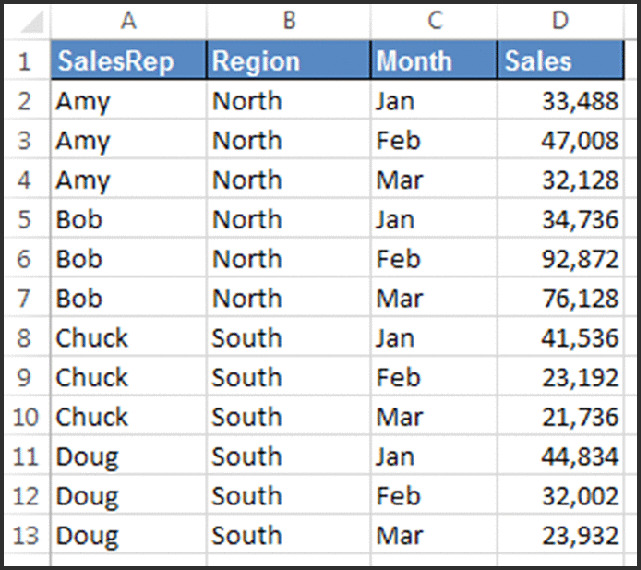8 Working with Pivot Tables
In This Chapter
- Creating pivot tables with VBA
- Looking at examples of VBA procedures that create pivot tables
- Using VBA to create a worksheet table from a summary table
An Introductory Pivot Table Example
Excel’s pivot table feature is, arguably, the most innovative and powerful feature in Excel. Pivot tables first appeared in Excel 5, and the feature has been improved in every subsequent version. This chapter is not an introduction to pivot tables. We assume that you’re familiar with this feature and its terminology and that you know how to create and modify pivot tables manually.
As you probably know, creating a pivot table from a database or list enables you to summarize data in ways that otherwise would not be possible — and is amazingly fast and requires no formulas. You also can write VBA code to generate and modify pivot tables.
This section gets the ball rolling with a simple example of using VBA to create a pivot table.
Figure 8.1 shows a simple worksheet range that contains four fields: SalesRep, Region, Month, and Sales. Each record describes the sales for a particular sales representative in a particular month.

Figure 8.1 This table is a good candidate for a pivot table.
Get Excel 2016 Power Programming with VBA now with the O’Reilly learning platform.
O’Reilly members experience books, live events, courses curated by job role, and more from O’Reilly and nearly 200 top publishers.

